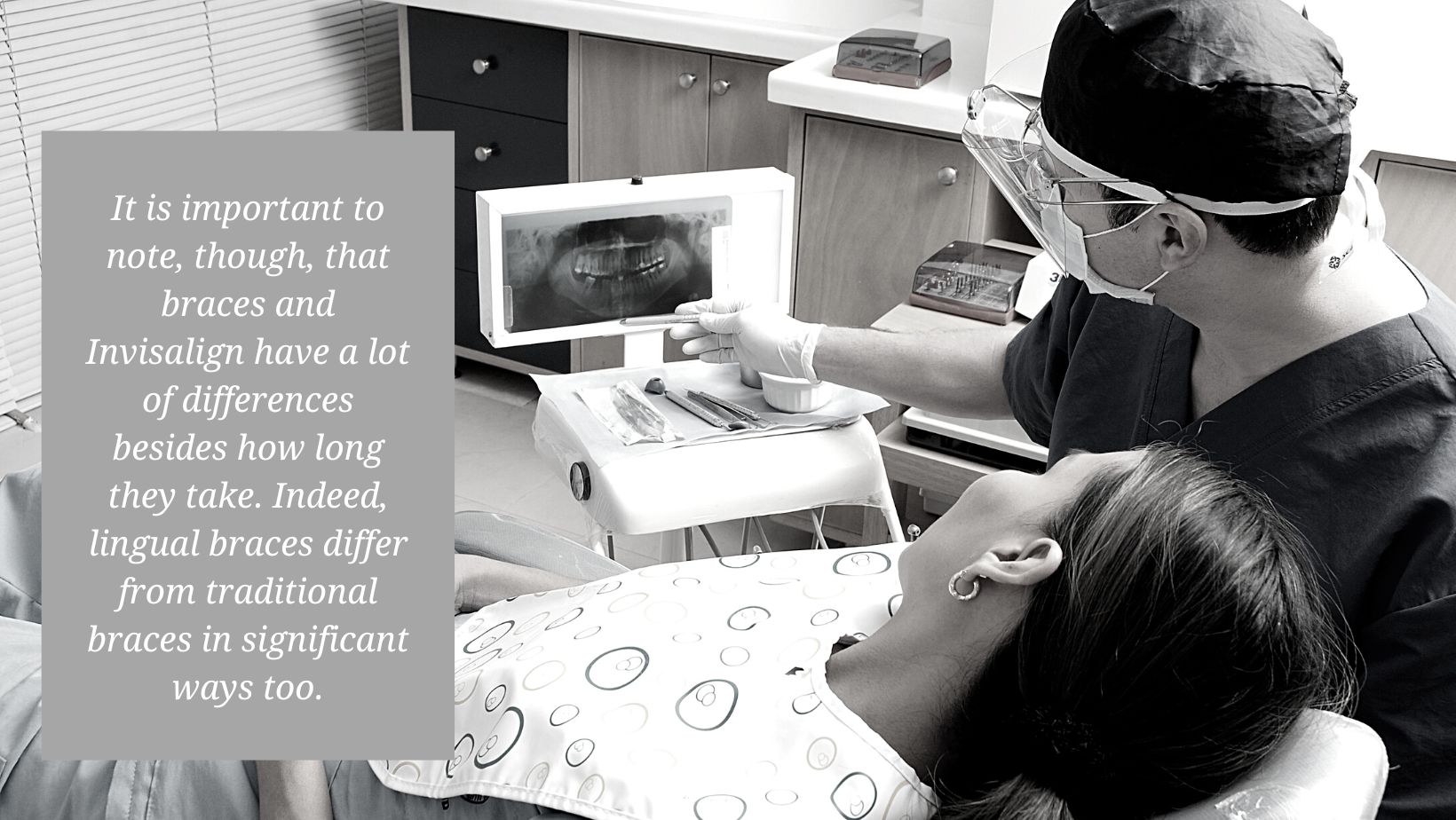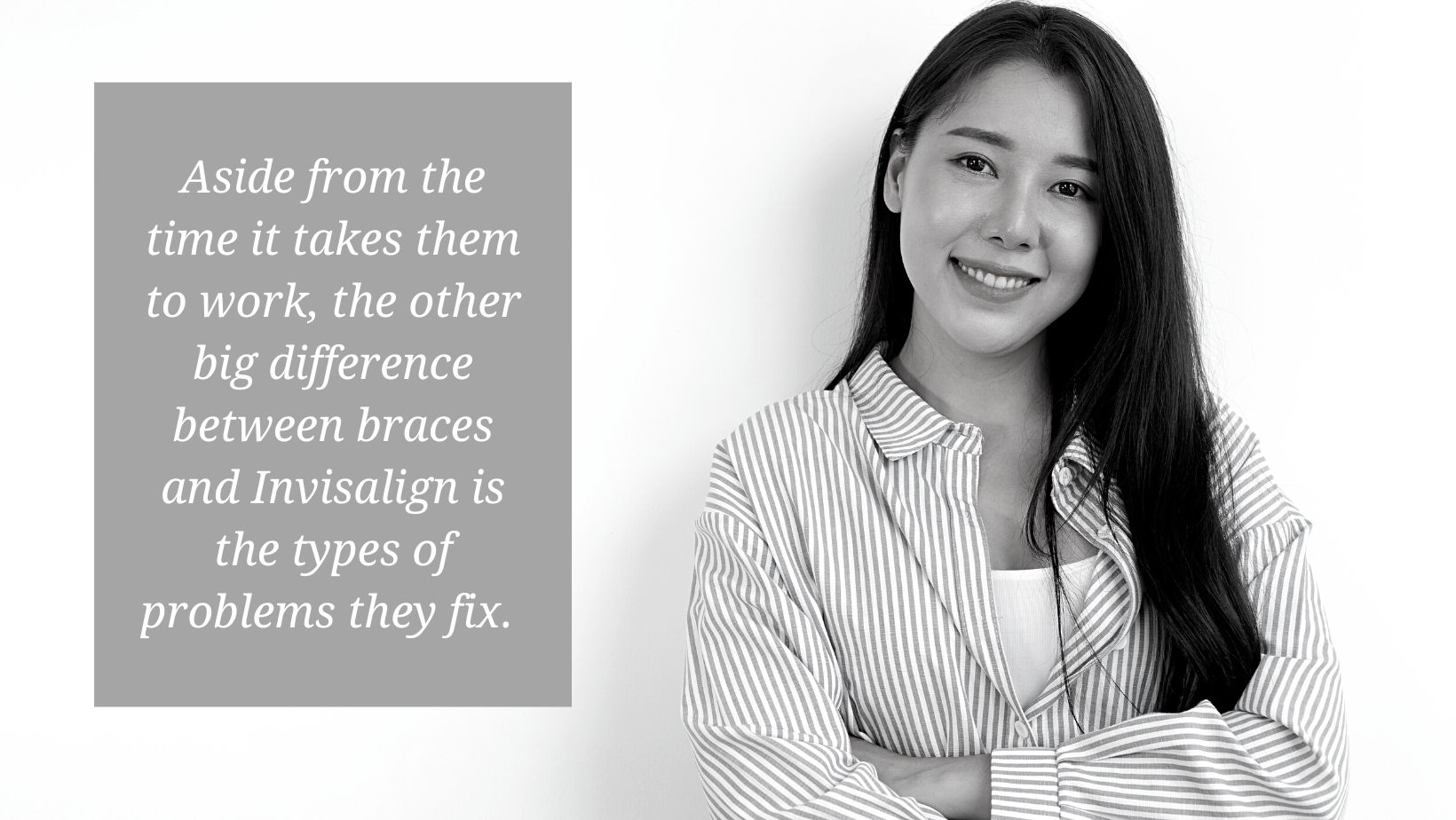Lingual braces have the power of traditional braces without the obvious “metal mouth” look. They work with the same type of brackets and wires as braces, but they are hidden behind the teeth, making them even less noticeable than clear aligner trays like Invisalign.
With any kind of straightening treatment, patients want quick results. How long does it take lingual braces to work? On average, treatment takes about the same time as regular braces, but longer than clear aligner trays.
Every case is unique though, and there are several factors that contribute to the duration of treatment. This makes it hard to pinpoint exactly how long any method will take. Plus, there are other considerations besides treatment time that could sway a patient’s choice between lingual braces and an alternative straightening method.
When Will You See Straighter Teeth?
Moving teeth is a gradual process. Even the best dentist or orthodontist will usually not give a firm answer to how it will take to straighten a patient’s teeth. Instead, they will give an average range of what to expect, based on that patient’s particular situation.
- Straightening teeth with lingual braces typically takes anywhere from 1 to 3 years. The same goes for traditional metal, clear, or ceramic braces.
- Invisalign and other treatments that use clear aligner trays work more quickly—often in as little as 7 to 18 months—assuming that there is only mild or moderate movement needed.
It is important to note, though, that braces and Invisalign have a lot of differences besides how long they take. Indeed, lingual braces differ from traditional braces in significant ways too.
Cost, comfort, and convenience will undoubtedly be part of the decision. But also, not every method will work for every problem. Patients should consider all of the variables to find what will get them the results they want—even if it takes slightly longer than they would like.

Why Do Braces Take So Long?
The length of treatment to straighten teeth can depend on several things:
- How crooked are the teeth? Correcting slightly crooked teeth or a small gap will be at the shorter end of the timeline. Severely crooked or crowded teeth, or misalignments of the jaw will obviously take longer. And most patients have a combination of issues to tackle at once to achieve a perfect smile.
- How old is the patient? Adults can, and do, get braces, but treatment can take longer than it does for kids. Up until about age 12 or 13, the jaw is still growing and the permanent teeth are easier to move.
- How closely does the patient follow the plan? Keeping braces clean and avoiding certain foods can be challenging, and failing to do so could delay treatment. If a patient gets a cavity, or they bite down on something that breaks a wire or bracket, those issues will need fixing. Missing appointments to get wires tightened, or not wearing rubber bands could also mean a longer time for treatment.
Why You Might Like Lingual Braces
Aside from the time it takes them to work, the other big difference between braces and Invisalign is the types of problems they fix. Invisalign is typically best for mild to moderate crookedness, gaps, and crowding. Braces can fix just about anything.

For extreme cases that require braces, lingual braces have the advantage of being hard to see. They attach to the back of the teeth instead of the front, so people may not even notice that a patient has them. This is a big selling point, especially for adults or older teenagers who may feel self-conscious about having old-fashioned braces.
The fact that lingual braces are hidden from view also has another advantage. Removing braces can sometimes leave some discoloration on the teeth. Patients may need to have their teeth professionally whitened, or even opt for bonding or veneers if the staining is bad. With lingual braces, any residue will be just as invisible as the braces themselves.
Reasons to Consider an Alternative Method
For slightly crooked teeth, Invisalign will usually be a quicker option. Aligner trays have the added advantage of being removable, as long as the patient wears them for 20 to 22 hours a day.
But the biggest reason people might choose Invisalign or even traditional braces over lingual braces is the cost. Invisalign’s price is slightly higher than braces, but both fall within the range of $3,500 to $8,000.
On the other hand, lingual braces cost roughly $6,000 to $13,000. The main reason is the time and skill it takes an orthodontist to place brackets on the back of the teeth as opposed to the front. In addition, some patients might need custom-made brackets to fit oddly shaped or sized teeth.
In fact, the size of a patient’s teeth can rule out lingual braces entirely. The back surface of a tooth is always smaller than the front. There might simply not be enough room to attach a bracket on some teeth. Lingual braces are rarely used on young kids for exactly this reason. But even adults can have microdontia which is the medical term for abnormally small teeth.
There are a few convenience issues to consider with lingual braces too.
- Not every orthodontist offers lingual braces, so it might be harder to find them.
- It can be challenging for patients to keep lingual braces clean since the brackets are harder to see and reach.
- Having the brackets come in contact with the tongue can be uncomfortable.
- Lingual patients can temporarily affect a patient’s speech while they get used to them.
If lingual braces’ cost or any of these issues are a concern for a patient, they might be better off getting traditional braces. Both options work the same, with lingual braces having the advantage of being nearly “invisible”.
Get Started on a Straighter Smile
Straightening teeth has several advantages. Besides the obvious perk of a more attractive smile, orthodontia can fix serious problems that affect a patient’s dental health. Things like misaligned bites, gaps, crowding, or crookedness can make it difficult or painful to eat or talk.
Braces are a great way to correct even the worst cases of misalignment. Lingual braces have the added advantage of working “behind the scenes” so no one but the patient needs to know they’re there.
The first step when considering getting straighter teeth is to talk to a dentist. If you need to find a dentist or an orthodontist in your area you can search our database. During a consultation, they will go over the options that they think will get the best results in the least amount of time.


